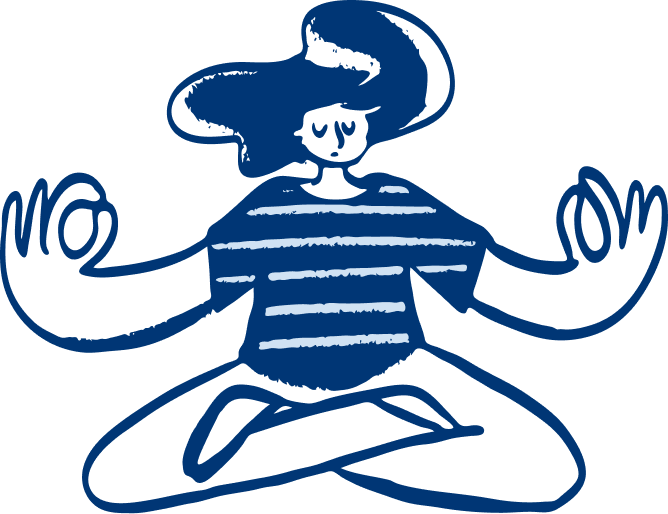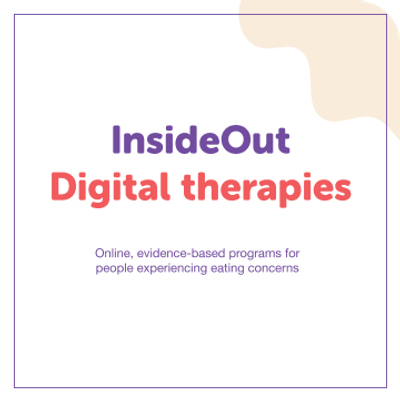Types of eating challenges and EDs
Navigating our relationship with food, eating, and exercise can be complex.
Whether you’re seeking to understand your own experiences or support someone else, this guide aims to provide clarity, connection, and a pathway to support.
On this page, you'll find information on the different types of eating challenges and eating disorders.
Scroll down to learn more.
“No two eating disorders are the same. No two individuals are the same. No two paths to recovery are the same. But everyone’s strength to reach recovery is the same.”
Types of eating challenges
Not all eating challenges (disordered eating) fit into a specific eating disorder (ED) category, but they can still cause distress and impact daily life. Recognising these patterns is an important step towards building a healthier relationship with food and your body.
Signs of eating challenges may include:
- Restricting food: Avoiding meals or certain types of food, such as carbohydrates, sugars, or processed items, and eating very little overall
- Binge eating: Eating large amounts of food in one sitting, often quickly and in secret, followed by feelings of guilt or shame
- Purging behaviours: Using laxatives, diuretics, or vomiting to control weight, or over-exercising to ‘earn’ food or get rid of what’s been eaten
- Rigid food or exercise routines: Obsessively tracking calories, following strict eating rules, or exercising excessively to maintain control
- Emotional eating: Turning to food to manage stress, sadness, or boredom, even when not physically hungry
- Social withdrawal: Avoiding food-related activities or social situations out of fear, shame, or discomfort about eating.
You deserve support.
Eating challenges can take a toll on energy, mood, relationships, and physical health over time. If you notice these patterns in yourself, help is available. You can contact Butterfly’s National Helpline 1800 ED HOPE (1800 33 4673) or explore InsideOut’s Digital Therapies.
If those don’t feel like options for you right now, you can always contact Lifeline. We’re here to listen to whatever you might be going through 24 hours a day, 7 days a week via 13 11 14, text, and chat.
Types of eating disorders (EDs)
Eating disorders can look very different from person to person.
Some involve eating too little, others too much, and many include a mix of behaviours like restricting, bingeing, or purging. It’s also common to experience overlapping symptoms that don’t fit neatly into one category. While each ED has its own challenges, all of them can affect both physical and mental wellbeing.
Below, we’ve listed the most recognised types of EDs. Understanding the different types can help make sense of what you or someone you care about might be going through.
- Binge eating disorder (BED)
Binge eating disorder (BED) is the most common ED, however, an estimated 80% of people aren’t diagnosed.
BED involves regularly eating large amounts of food quickly, often feeling unable to stop, even when not hungry. These episodes may lead to physical discomfort and emotions like guilt, shame, or sadness afterwards. Unlike other EDs, binge eating isn’t followed by behaviours like purging.
Signs of BED may include:
- Eating when not hungry or past the point of fullness
- Hiding food or eating alone due to embarrassment
- Engaging in a binge-starve-binge cycle
- Feeling guilty, sad, or ashamed after eating.
- Anorexia nervosa (AN)
- Bulimia nervosa (BN)
- Other specified feeding and eating disorders (OSFED)
- Less common EDs
Understanding the different types of eating challenges and EDs is an important step toward making sense of your own experiences or supporting someone you care about.
If you’d like to explore more about eating challenges, visit other pages in the toolkit for guidance on managing triggers and finding long-term help.
To learn more about the different types of eating disorders, visit trusted organisations like Butterfly or the InsideOut Institute, where you’ll find detailed information and resources tailored to your needs.
Wherever you are in your journey, support is always available and you don’t have to face this alone.
Click here to download, save, or print our eating and body image fact sheet.





